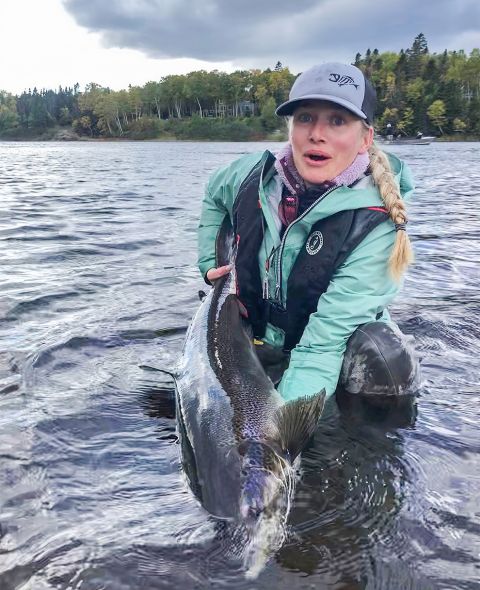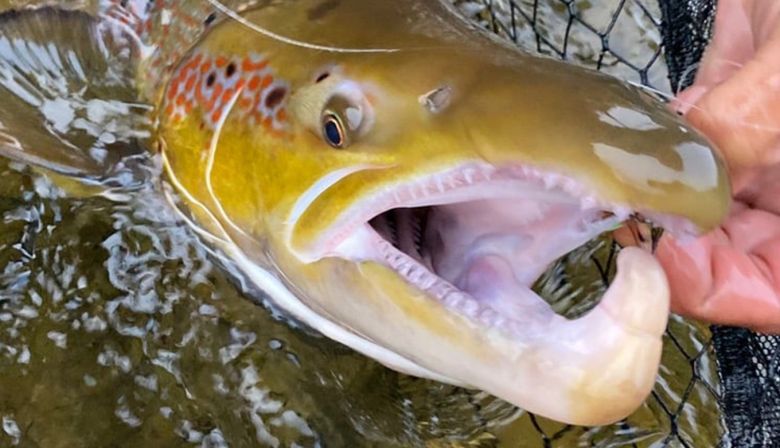
Subscribe & stay up-to-date with ASF


But when the Atlantic salmon return to freshwater, those teeth fall out, and they grow an entirely new set of teeth that are triangle-shaped.
The reason is not known, except it likely goes back to a previous need at some point in their evolution. The puzzle deepens with the fact that Atlantic salmon do not eat when they return to fresh water. In fact in some situations such as in the Ponoi River in northwest Russia, the salmon can go as long as 22 months without eating. So, why the teeth?
A related question is where the Atlantic salmon get the calcium that goes into the building of these triangle-shaped teeth, as well as calcium needed for the bone needles that form the structure of the kype and bulbous nose in the males since they are not eating. The calcium needed is reabsorbed from the scales, an elegant solution to a changed need of the fish.
Just one more mystery of a species that is charismatic partly because it is so rich in mysteries.
Incidentally, a reminder that while Atlantic salmon can survive the rigours of spawning when the Pacific salmon species do not, it isn’t every Atlantic salmon that is able to go on to return to the sea, either immediately or after a winter spent in freshwater. The rate of survival to return to the ocean will vary from river to river, and likely also in the yearly conditions. One might project that it would be no surprise to have a lower survival this year in the multitude of watersheds that continue to have low water. The effort required to reach spawning areas and to conduct the spawning activities is bound to reduce the survivability of the fish.
As to actual survival, it should be no surprise that after a migration of 3,000 km, and adversity in freshwater, perhaps 30 per cent are able to survive and become “kelts”.
Exploring the facts of life and survival of wild Atlantic salmon is part and parcel of being a 21st century Atlantic salmon conservationist. Atlantic salmon have still more mysteries to be unravelled, and there are many surprises along the way.
Charles Cusson, ASF Director of Programs for Quebec, looks at the end of the season in Quebec:
The season ended on Wed., Sept. 30. Mother Nature brought rain to the Gaspé and Lower St-Lawrence regions on the last day of the season which should help maintain levels into the spawning periods.
Overall, for 2020, most rivers have reported increases in the number of large salmon and a significant increase in grilse abundance, but with variability in that increase. The figures presented in this report are based on preliminary numbers provided by river managers. The official data will be available in February 2021.
Rivière Matane River
Data accumulated during the 2020 season which ended on Sept 30. paints a very encouraging picture, especially in the number of grilse.
2,668 fish were counted (1,653 large salmon and 1,015 grilse) which represents the 2nd best results since 2016 when 3,520 fish (1,393 salmon and 2,127 grilse) had been counted.
This year’s return numbers also represent the 17th best since 1984. The best all time result was in 1986 when 1,436 salmon and 2,431 grilse returned to spawn for a total of 3,867 fish.
An uptick in the number of fish landed also occurred in 2020.
To Sept. 30, anglers reported landing 906 fish (294 salmon and 115 grilse were released, 170 salmon and 327 grilse harvested) which represents the 3rd best result since 2015. The largest number of fish landed all time since 1984 dates from 1993 which included 599 salmon and 728 grilse for a total of 1,327.
Mitis River
Angling action on the Mitis was very good right until the end of the season with salmon being landed in all sectors of the river. The Mistigougèche tributary performed well during its inaugural season which ended on August 30th.
For the season in 2020,1,627 fish (822 salmon and 805 grilse) were transported above, this represents the 2nd best migration all time since the record year of 2016 (835 large salmon and 1,008 grilse.
375 fish were reported landed for the 2020 season (165 salmon released and 210 fish harvested), 3rd best result since 2015. The best all time since 1984 was recorded in 2016, 558 salmon and 957 grilse.
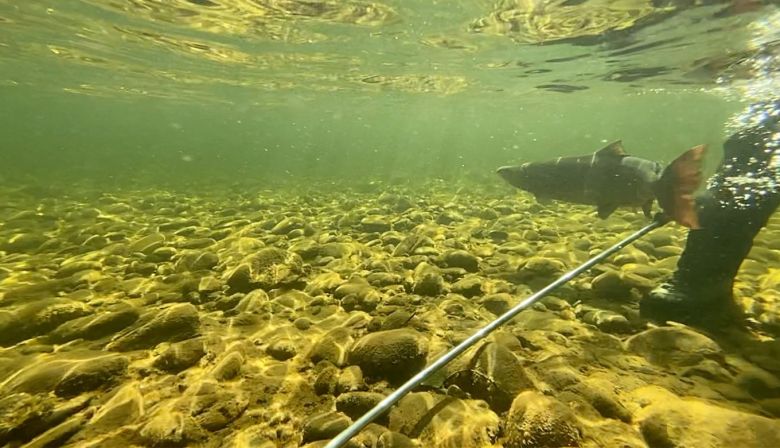
Rivière Bonaventure River
The Bonnie had a decent season, the last count performed in September indicated the presence of 1,834 fish (1,531 salmon and 303 grilse) which is the 3rd best result since 2015. The best all time since 1984 happened in 1990 when 3,924 fish were counted (2,633 large salmon and 1,291 grilse).
1,075 fish (757 salmon released and 318 grilse harvested) were reported landed by anglers in 2020, 3rd best result since 2015 when a total of 1,625 fish were landed and 23rd best since 1984. The record was established in 2011 when 1,892 fish were reported landed.
Rivière Madeleine River
The most recent information indicates 1,714 fish (907 salmon and 807 grilse) migrated through the fishway during the 2020 season which is the best result since 2011 and 6th best since 1984. The record year was 1987 when 1,892 fish (1,286 salmon and 606 grilse) were counted.
The last in-river counts were completed in September and indicated the following:
York River:
1,575 salmon and 399 grilse for a total of 1,974 which is the best result since 2015 and 9th best all time since 1984. The record was established in 1988, 2,150 salmon and 436 grilse for a total of 2,586 fish.
Dartmouth River:
823 salmon and 82 grilse totalling 905 fish which is the 3rd best result since 2015 and 23rd best all time since 1984. The record of 1,693 fish (1,282 salmon and 411 grilse) was established in 1992.
Saint-Jean River:
1,200 fish (770 large salmon and 430 grilse) represent the 2nd best result since 2015 and 13th best all time since 1984. The record was established in 1988 with a total of 2,373 fish (1937 salmon and 436 grilse).
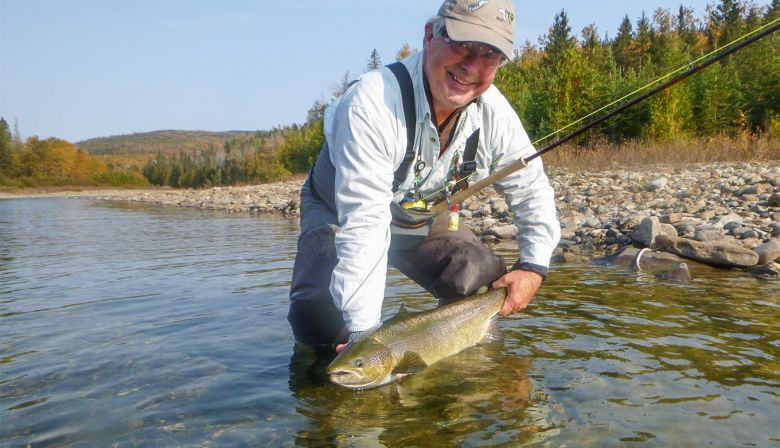
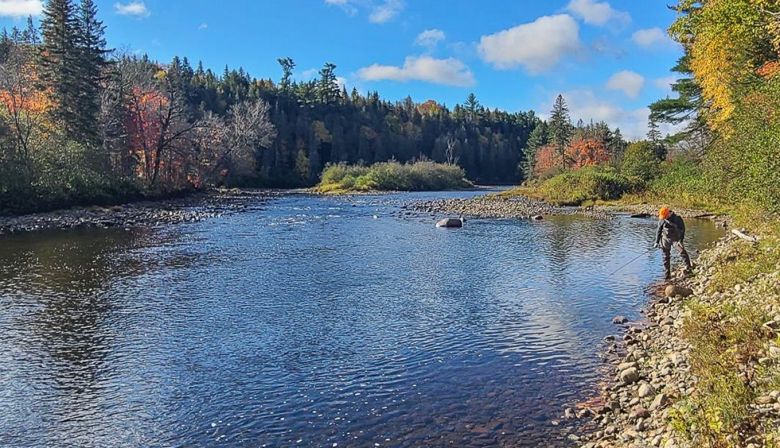
Miramichi
Paul Elson has been out several evenings recently, on the Little Southwest Miramichi and Northwest Miramichi:
Headwaters areas had some rain and brought the Little Southwest Miramichi and Northwest Miramichi up about 4-5 inches (10 cm+).
The colour has come back into the water of the Northwest Miramichi, but not so much in the Little Southwest. Overall, the water is still very low.
The salmon fishing is still extremely slow. I’m still just seeing the odd fish here and there but there has been no “Fall Run” that I have observed so far.
Water is cooled to less than 10 C as of Monday..
I released a grilse Monday morning on the Little Southwest, and it was the only fish I saw. I made a trip over to the Renous on the weekend, but there was not enough water there to hold a fish.
Stephanie and I each hooked a grilse on the evening of Mon., Oct. 5 in one of the upper pools on the Northwest Miramichi. Both were old summer fish. There is probably not enough water on the Northwest at this time for the salmon to make it up river very far.
Lots of striped bass in the Redbank area. Some are being caught on “sand eels”, some on bait and some on flies while trolling.
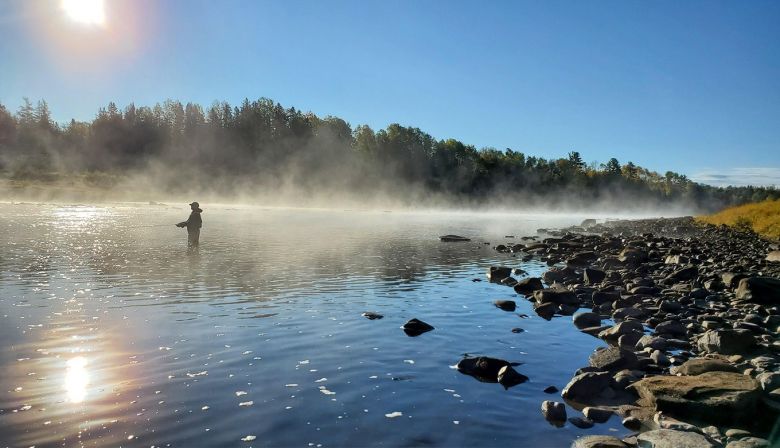
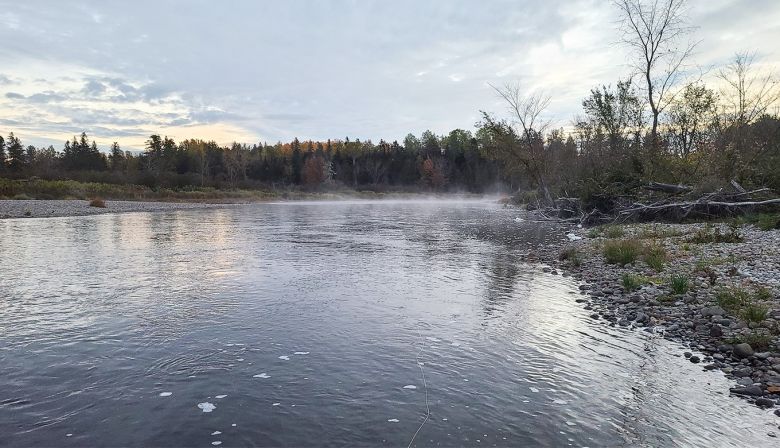
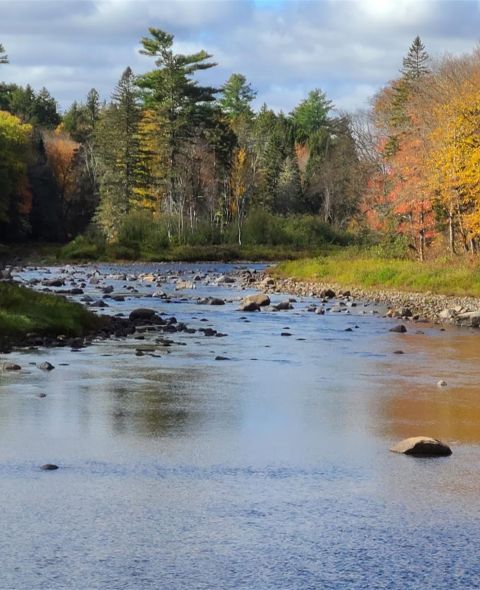
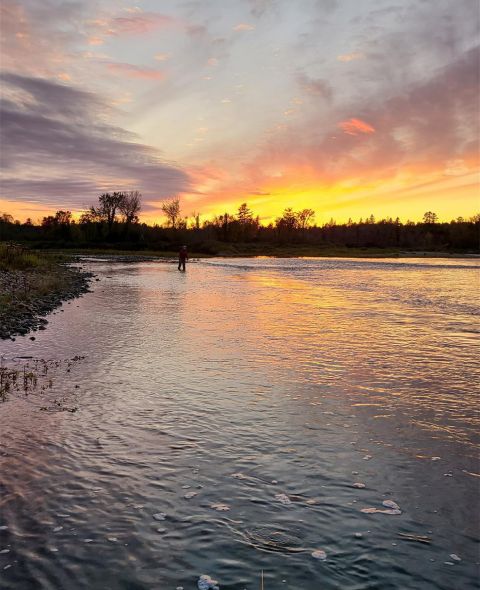
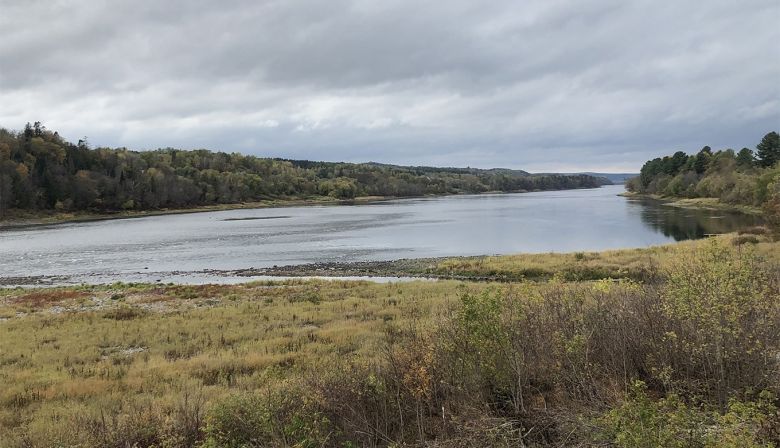
Nathan Wilbur,
ASF Director of New Brunswick programs, notes about the St. John:Now a Series of Headponds
The Saint John River, or its Maliseet name “Wolastoq”, is no longer a river, but a series of headponds behind several significant hydro dams.
It is disheartening to see such a mighty river’s ecology and hydrological function so affected by dams. There are a few places along the river – downriver of a dam but upriver from the influence of the next headpond – where one can get a glimpse of the free flowing river with its gravel bars and runs and natural character of the river. One such place is around Florenceville (see photo), near where the Monquart stream enters the river. A heavy flow of water spills over the gravel bar in a run of water where surely many salmon have been caught over the generations. Hydro dams provide renewable electricity, but they’re not green.
I continue to hold out hope that with the advancements in new green technology and better storage, society’s need for these mega structures will be less and less, and they can be removed to restore natural function in rivers like the Saint John.

Hammond River
Geoff Giffin notes that in the past week the level of the river has come up with some badly needed rain.
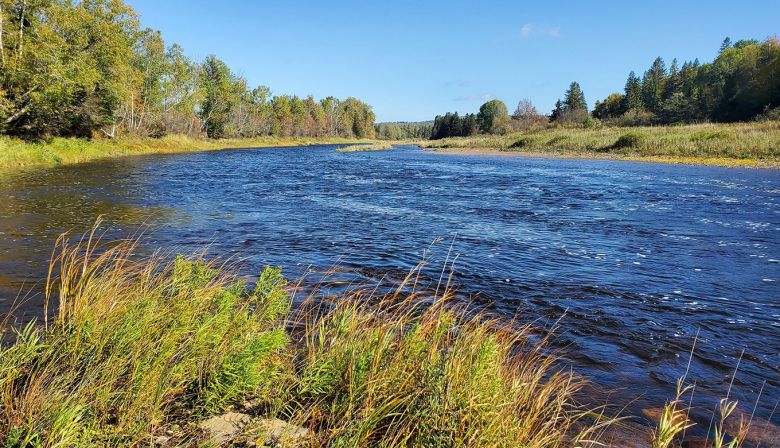
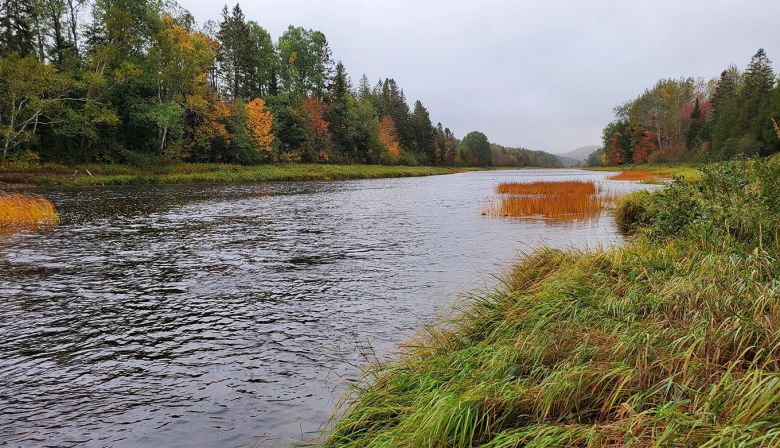
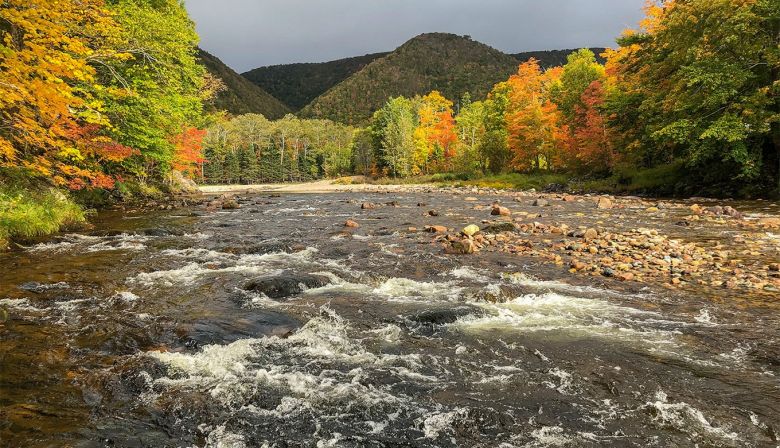
My wife, Julia, and I spent the week exploring beautiful Cape Breton and some of its salmon rivers while on vacation last week.
Most time was spent on the Margaree where we were charmed with its wonderful mix of river meandering through a valley enclosed by rugged hardwood mountains, fertile farmland, and a healthy Atlantic salmon culture.
We felt like we’d stepped back in time and loved it.
Although the water was low, we explored and fished the upper pools characterized by boulders, bedrock and faster flowing water, all the way down to the slow flowing river in the lower valley where the tide meets freshwater and salmon are fresh from the sea.
Hurricane Teddy had brought a good raise in water and some great fishing, but as fishing goes, “we should have been there yesterday” because the water had dropped right back to its low level and fishing slowed.
We did see many fish in the river, mostly large salmon, biding their time in the deep, slow pools waiting for a raise in water to continue upstream. We were content to slow down the pace of life, spend some time on the river, and scout which pools to revisit on our next visit.
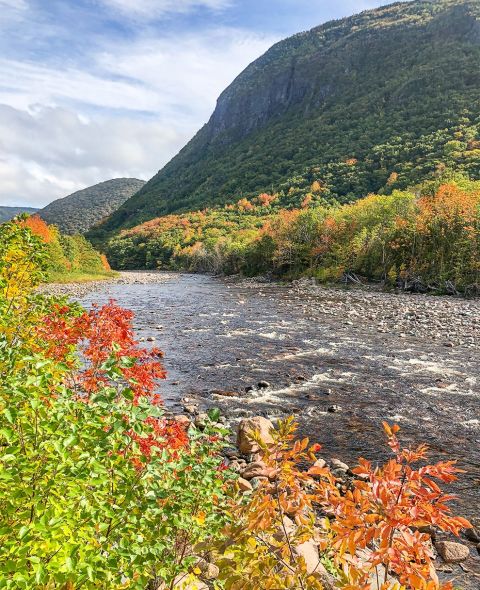
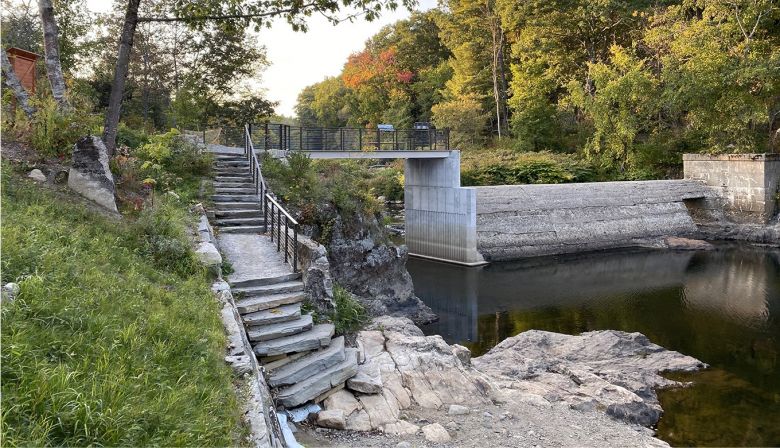
All of Maine’s watersheds need more rain, and they need it desperately. The photo above, on the Sheepscot, shows how low the water is. So too does the photo below of where Baskahegan Stream enters the Mattawamkeag, part of the Penobscot Watershed.
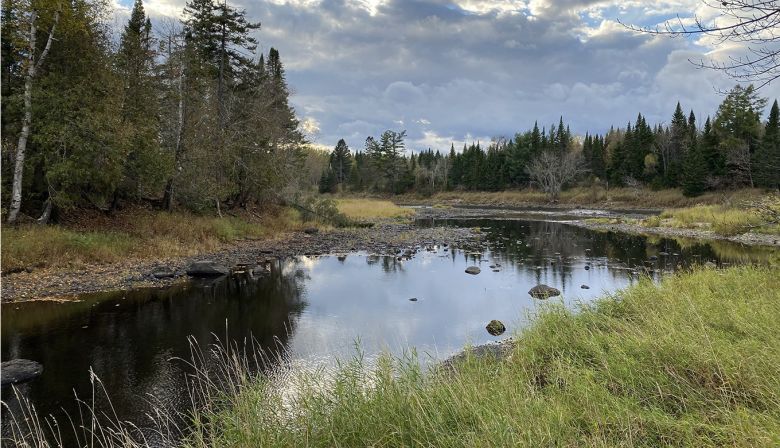
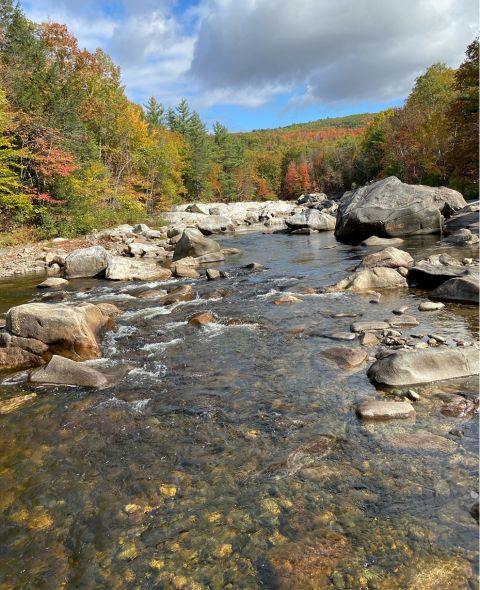
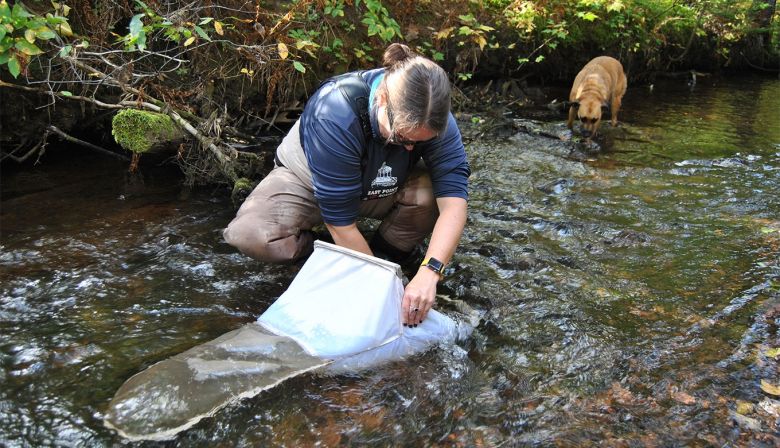
During my trip to PEI last week I was able to get out with a number of groups from across the Island and wet my line along the way.
The Morell River rose in response to Hurricane Teddy but quickly fell again. It seems that like many other rivers on PEI and in NS this wasn’t enough to bring in the fresh salmon that I saw jumping in the estuaries.
As I was leaving the Morell River I had a chance to stop by Grants Bridge, a popular salmon angling location on that river, and speak with a couple of anglers. There was a number of rainbow and brook trout around but it didn’t seem like there were many salmon in the river.
From that conversation and others that I had during my trip it sounded like few if any salmon had yet to be landed on PEI. In fact most of the chats I had ended talking about Alan Mills’ catch of a tagged salmon during his recent trip to the Margaree.
However, having few to no salmon at this time of year is not uncommon as the Atlantic salmon runs in many of our Northumberland Strait Rivers, especially those on PEI, usually don’t improve until later in October. Many groups on PEI were either busy wrapping up juvenile assessments or were starting their preparations for their fall adult assessments. As such, groups like the Abegweit Conservation Society and Morell River Management Coop, which are partnering on a PIT tagging population dynamic project on the Midgell and Morell rivers, and the Souris and Area Branch of the PEI Wildlife Federation only put their fish traps in this week.

Don Ivany, ASF Director of Programs in Newfoundland and Labrador has some quick notes on the three rivers still open:
Water is still high on the Gander and things have been slow. The Exploits has good water levels but it has been slow this past week. The Lower Humber has good water but according to reports it’s been rather slow for the past week.
He adds that it has been slow except for the sensational Atlantic salmon that came the way of Kastine Coleman. See below
